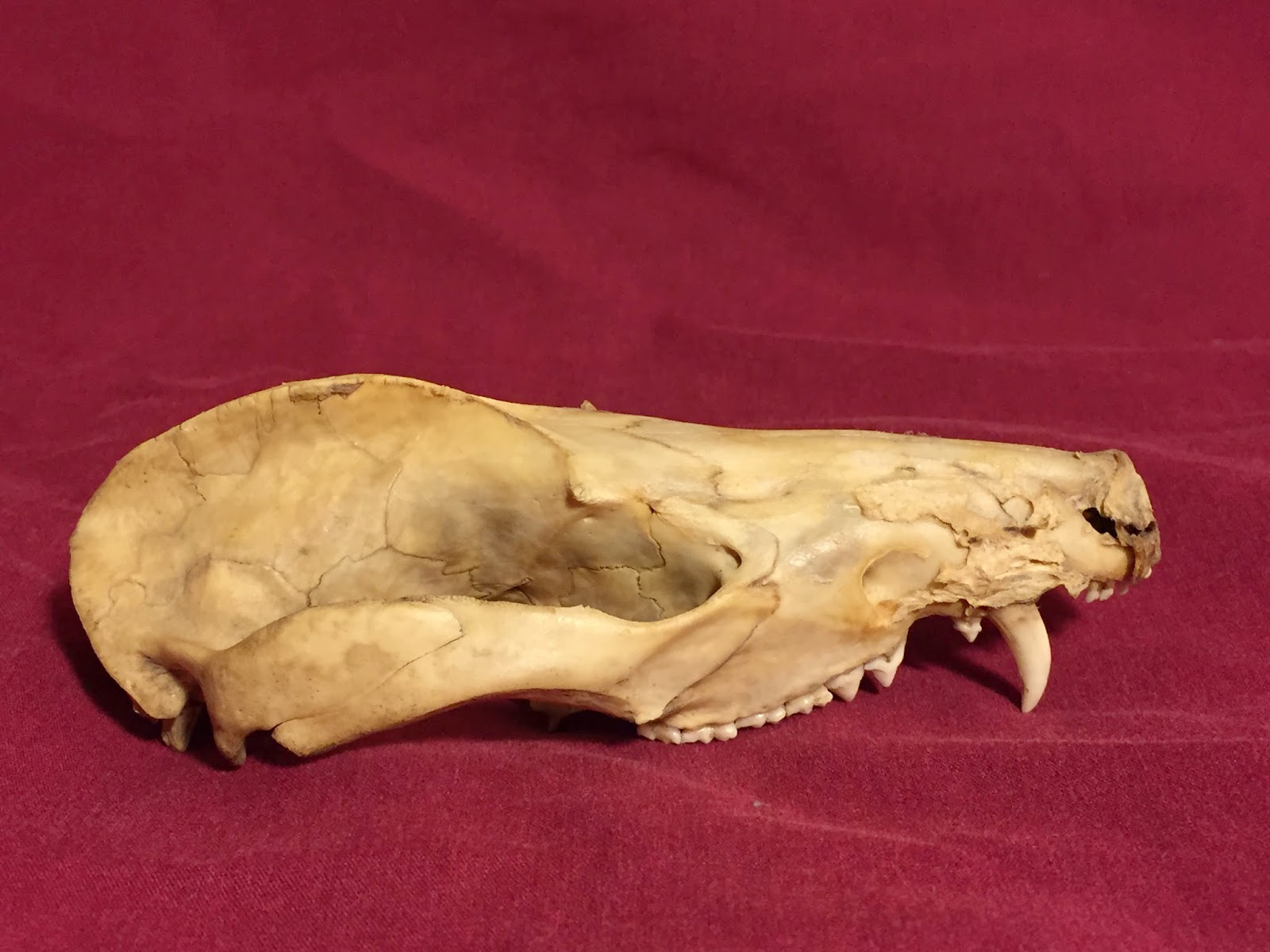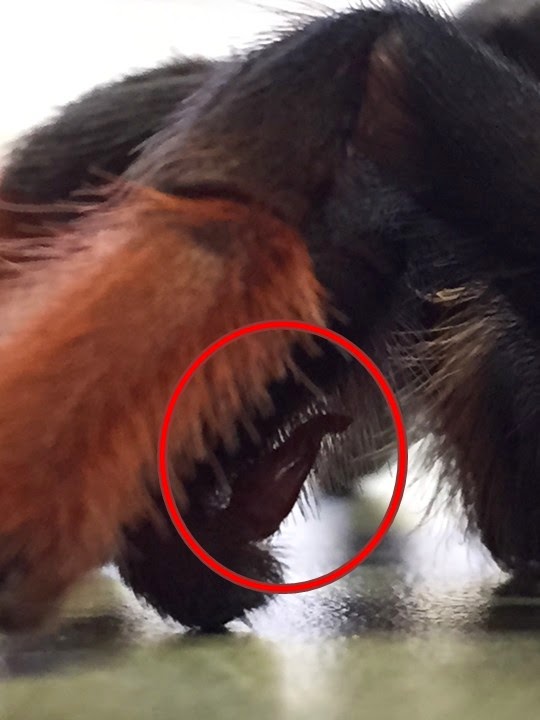I've been writing on and off for 6 years now and came to the realization this week that I have yet to write about one of my ultimate geeky interests: skulls! I love dead stuff. Skulls, bones, carcasses, and even study skins (a kind of taxidermy), I do it all. You give me a skull, and I will geek on about it at length. At Briar Bush's annual fundraiser a few years back, there I was in my best dress and holding a horse's head:
Don't let the fancy dress fool you, I am not a fashionable person (I just say I clean up nice).
Notice I am still wearing my Timex watch at a formal event.
Why do I love dead stuff so much? I think it's because there's an element of mystery to it. Who does this bone belong to? How did the animal die? How old was it? What was its last meal? Was it healthy? Today I want to share with you some of the mysteries that can be examined by looking at animal skulls. A careful look at an animal's skull can reveal a great deal about its former life.
What Big Eyes You Have!
The eye sockets on this domestic cat reveal its nocturnal habits. Nocturnal animals have larger eyes than their diurnal counterparts, which is reflected in the skull. This isn't always clear, raccoons for example don't have nearly as proportionally large eyes as cats, but if you come across a skull with big ol' sockets like this, it's a safe bet you have a nocturnal animal.
Biting Power
The first thing I notice on this skull is not those fangs on the front, but something even more important. See that large, upright, flat projection on the back of the skull, on top of the brain case? Whenever you see smooth, flat surfaces on a skull, it is for muscle attachment. The bigger the surface, the more muscle that can be attached. The name for the projection on the top of the head is called the sagittal crest and it provides attachment for the muscles that go from the head down to the jaw. In other words, the bigger the sagittal crest, the stronger the biting power. Who is this critter, that has a strong bite to back up those pointy teeth?
Henry may be cute when he's sleeping, but you do not want to be bitten by him.
That is none other than the Virginia opossum, who, if you remember from my previous post on opossums, has the most teeth out of any land animal in North America. The opossum has 50 teeth, while we humans possess a mere 32.
With your new found knowledge, take a look at this next skull and I'll bet you can tell me right away what kind of turtle you're looking at:
If you said "snapping turtle," you're exactly right. Specifically this is a common snapping turtle. Reptile skulls may not have the same anatomical features of mammal skulls, but the flat and smooth rule still applies.
Stories of Teeth
Teeth are the best way to tell what an animal eats. If all the teeth are razor sharp like on that cat skull, that animal is a carnivore. If there's some sharp teeth in the front and molars in the back like Henry the opossum, the animal is an omnivore, one that eats plants and meat. If an animal has teeth like these, with just flat molars for grinding up food:
you have a herbivore. This skull belongs to a white-tailed deer. Hunters often will age the deer they kill by looking at the wear on the teeth of the deer's jaw. Let's take a close look at the teeth on this deer's jaw.
When aging a deer, the teeth are referred to as being numbered from right to left, 1 through 6 (each tooth has 2-3 cusps, so don't let that throw you off). This website is the best one I have come across for aging. Take a look and see if you can figure out the age of this deer! Don't worry, I'll wait. Did you notice the worn last cusp on the 6th tooth and the blunt crests on tooth 4 and 5? This deer is between 3.5 and 4.5 years old.
Or is it?
The group that developed this method of aging did so using a captive population of deer being fed an artificial diet. They did not take into account deer that browse in areas with sandy soils or that eat grasses with a higher silica content, both of which would cause a deer's teeth to wear at a faster rate. Scientists have concluded that aging a deer by its teeth can really only tell you if it is older or younger than 2.5 years, which is the time when the deer acquires its permanent 1-3 teeth.
Ok, let's take a look at one last mystery. What if you don't have a skull, you don't have a set of teeth, but you have just a single tooth alone?
What can you possibly get from one tooth? Quite a bit, as it were! This pointy tooth is conical, not flat on the sides. This means that this tooth is only made for holding prey, not for chewing it. When we look at the bottom of the tooth:
we notice that it's concave, that there are no roots to anchor this tooth into the jaw. Now we know that we 1) have a predator that 2) doesn't chew its food and 3) has teeth that are meant to fall out and be replaced easily. Couple that with where you would have found this tooth, in a freshwater ecosystem in Florida and can you figure out who this tooth belongs to?
Down the hatch, blue crab.
The American alligator. It's amazing what you can figure out from just looking at a single isolated tooth!
By looking at details on an animal's skull, such as eye sockets, places for muscle attachment, and teeth, you can discover all sorts of clues about an animal's former life. This is why I love dead things so much, I love the opportunity to exercise my geeky brain and do some critical thinking. The next time you come across a skull or animal bone, stop for a moment and see what you notice. Then do me a favor and send me a photo on my Facebook page--I'd love to see it too!
Can't get enough dead stuff? Check out my latest post, Revealing the Mystery of Bones!















